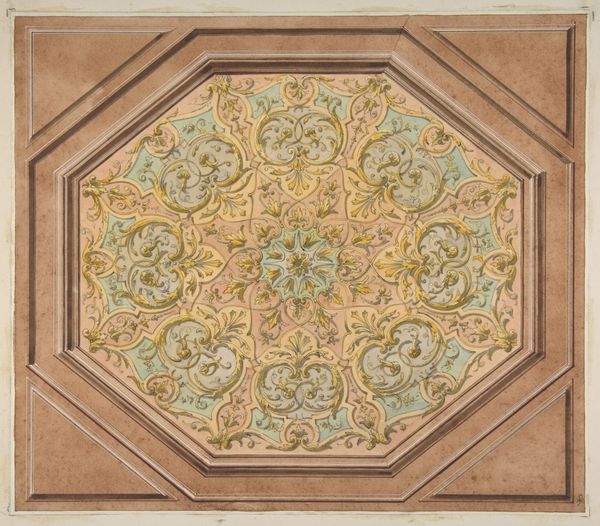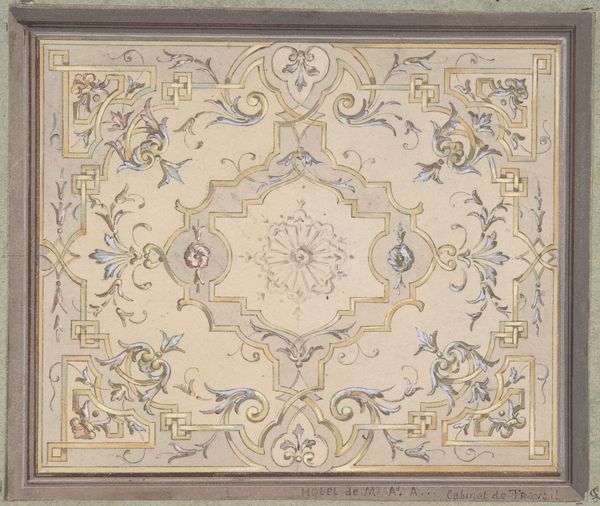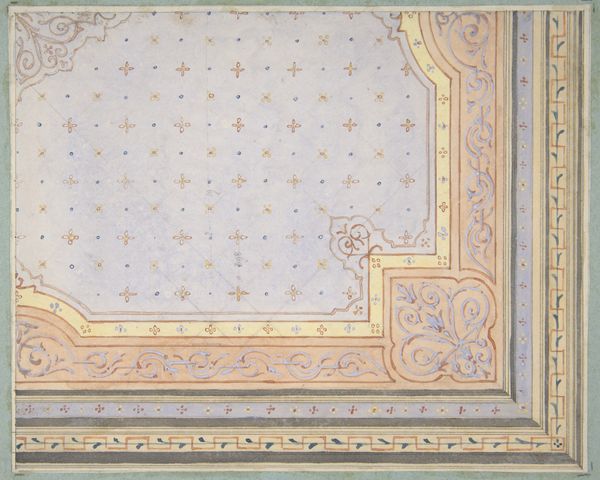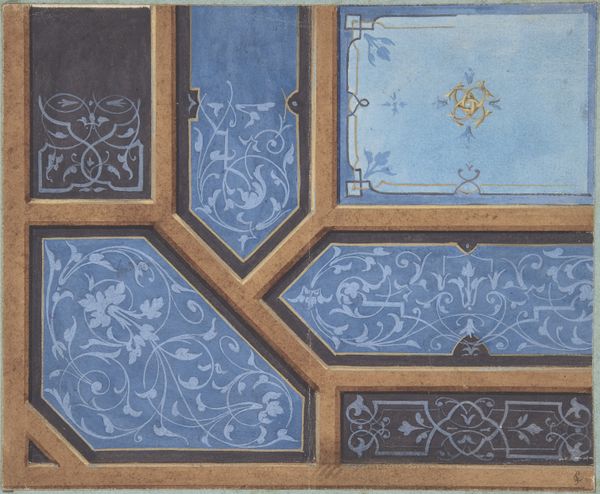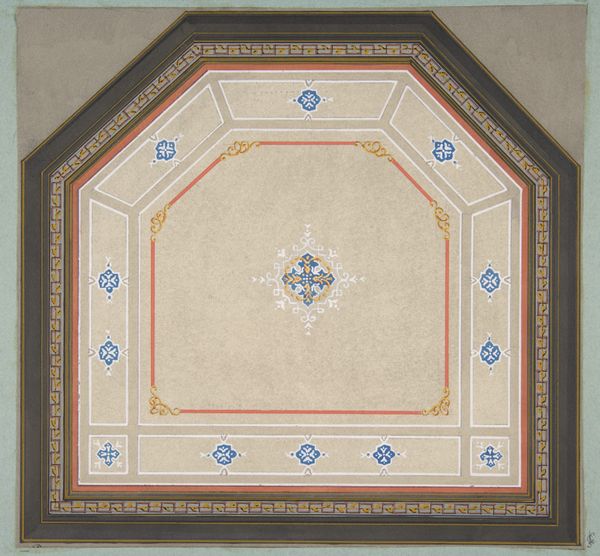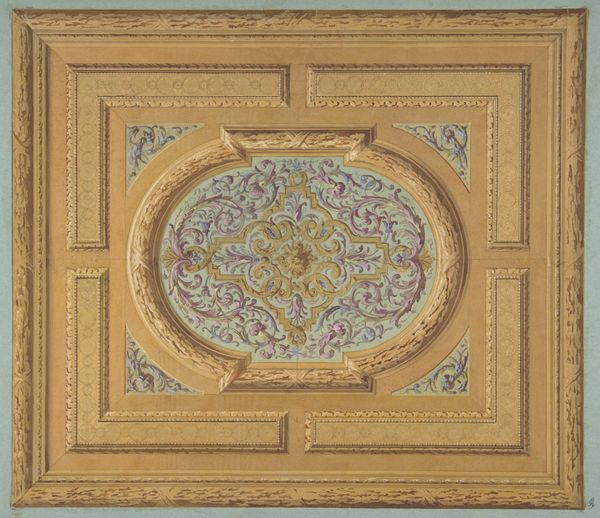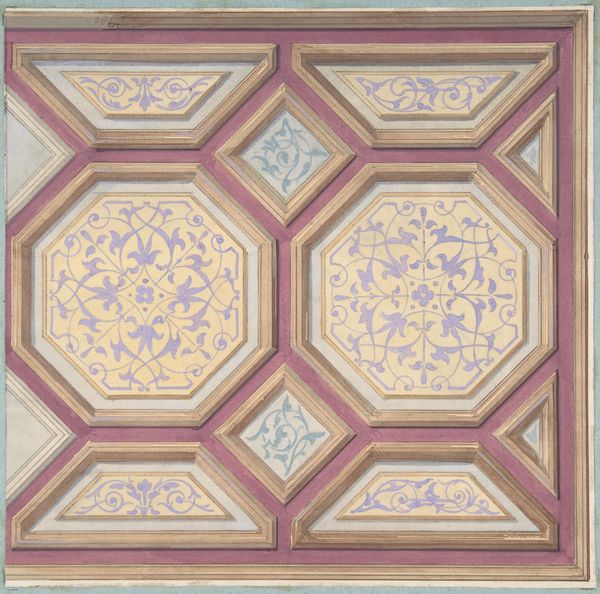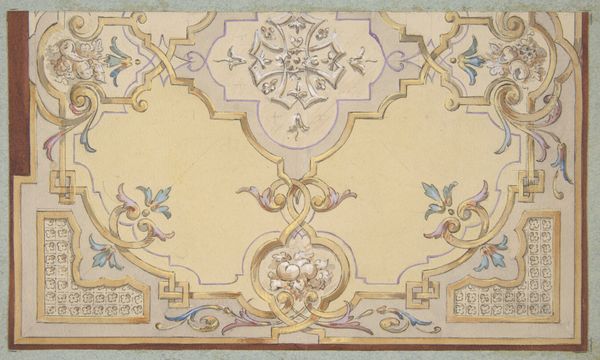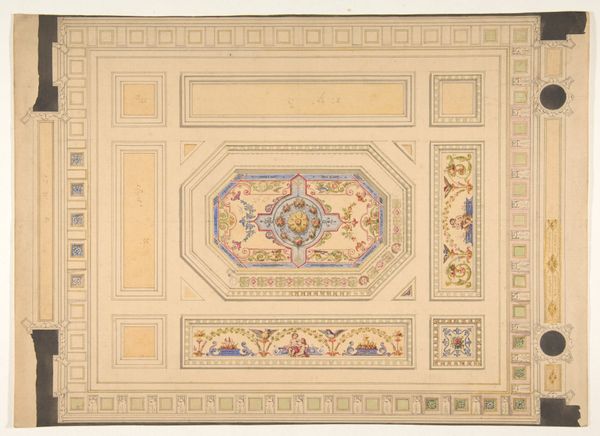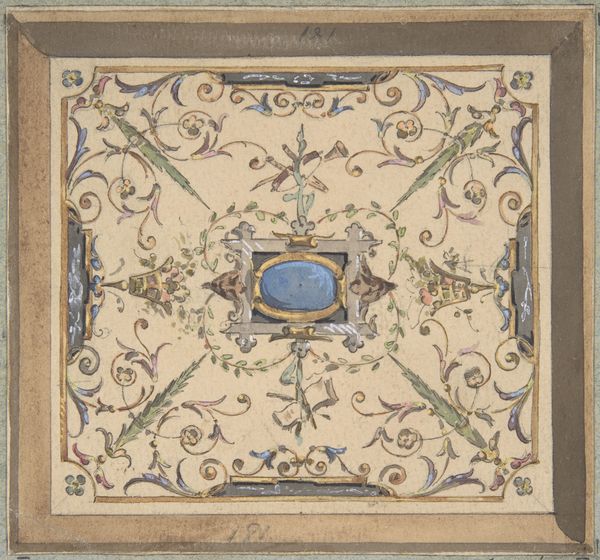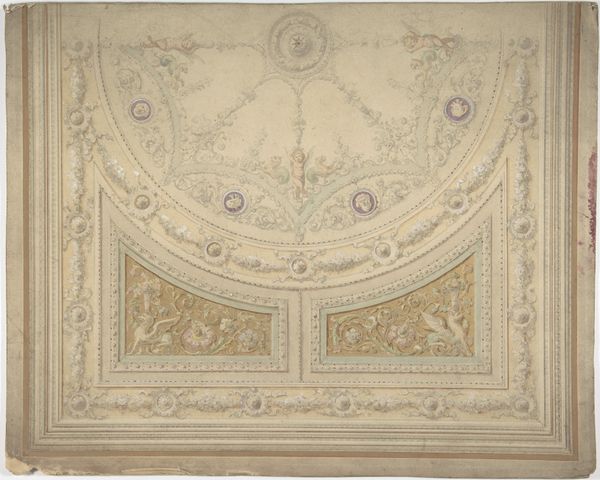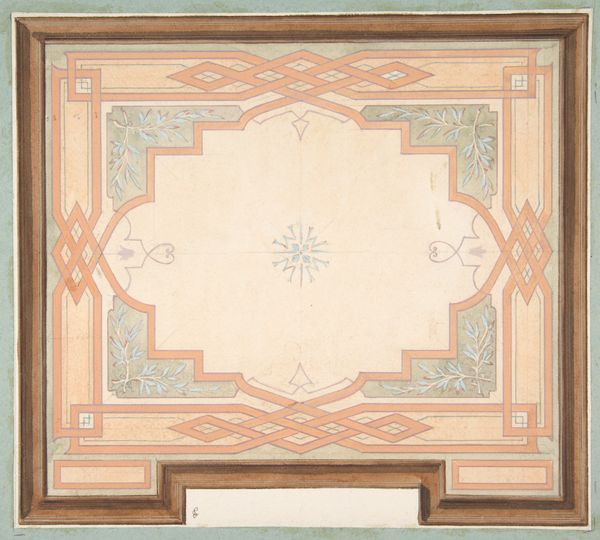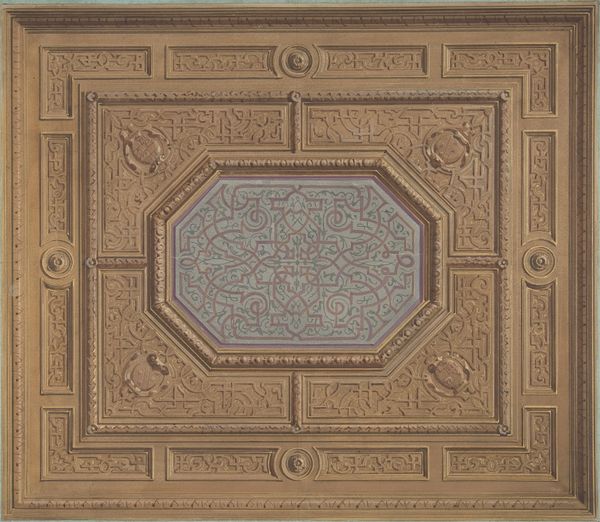
Design for a coffered ceiling decorated with rinceaux 1840 - 1897
drawing, ornament, print, architecture
drawing
natural stone pattern
ornament
historic architecture
geometric pattern
traditional architecture
tile art
repetitive shape and pattern
geometric
vertical pattern
men
wooden texture
pattern repetition
decorative-art
layered pattern
architecture
Copyright: Public Domain
Editor: This is Jules-Edmond-Charles Lachaise’s "Design for a coffered ceiling decorated with rinceaux," made between 1840 and 1897. It looks like a drawing or a print, showcasing an elaborate ceiling design. What's striking to me is its organized complexity. What do you see in this piece? Curator: Beyond the visual appeal, I see a representation of power structures embedded in 19th-century architecture. Coffered ceilings, especially ones as intricately decorated as this, were symbols of wealth and authority. Editor: So the ceiling design isn’t just pretty, it’s political? Curator: Precisely! Consider the time period. The 19th century was a time of enormous social and political change with emerging ideas challenging the established order. Who benefitted from these ornate spaces and whose labor made them possible? Those are questions this drawing brings to mind. Editor: That makes me think about labor exploitation involved in creating something like this, even the design phase of such craftwork... The symmetry seems to indicate a mass production of sorts, doesn't it? Curator: Absolutely, we could also examine the rinceaux motif itself. The intertwining floral and vegetal elements could be interpreted as a commentary on humanity's relationship with nature – a relationship often shaped by colonial exploitation during that era. Also, thinking of ornamentation in contrast with plain architectural styles. Which class is most attracted by it? What could that say? Editor: I hadn't considered all the layers of meaning embedded in a ceiling design! Now I see it's not just a drawing; it’s a statement about power, labor, and social hierarchies. Curator: Exactly! It's a starting point for a much larger conversation about the intersection of art, society, and politics, and this approach enriches our understanding and expands the narrative.
Comments
No comments
Be the first to comment and join the conversation on the ultimate creative platform.
